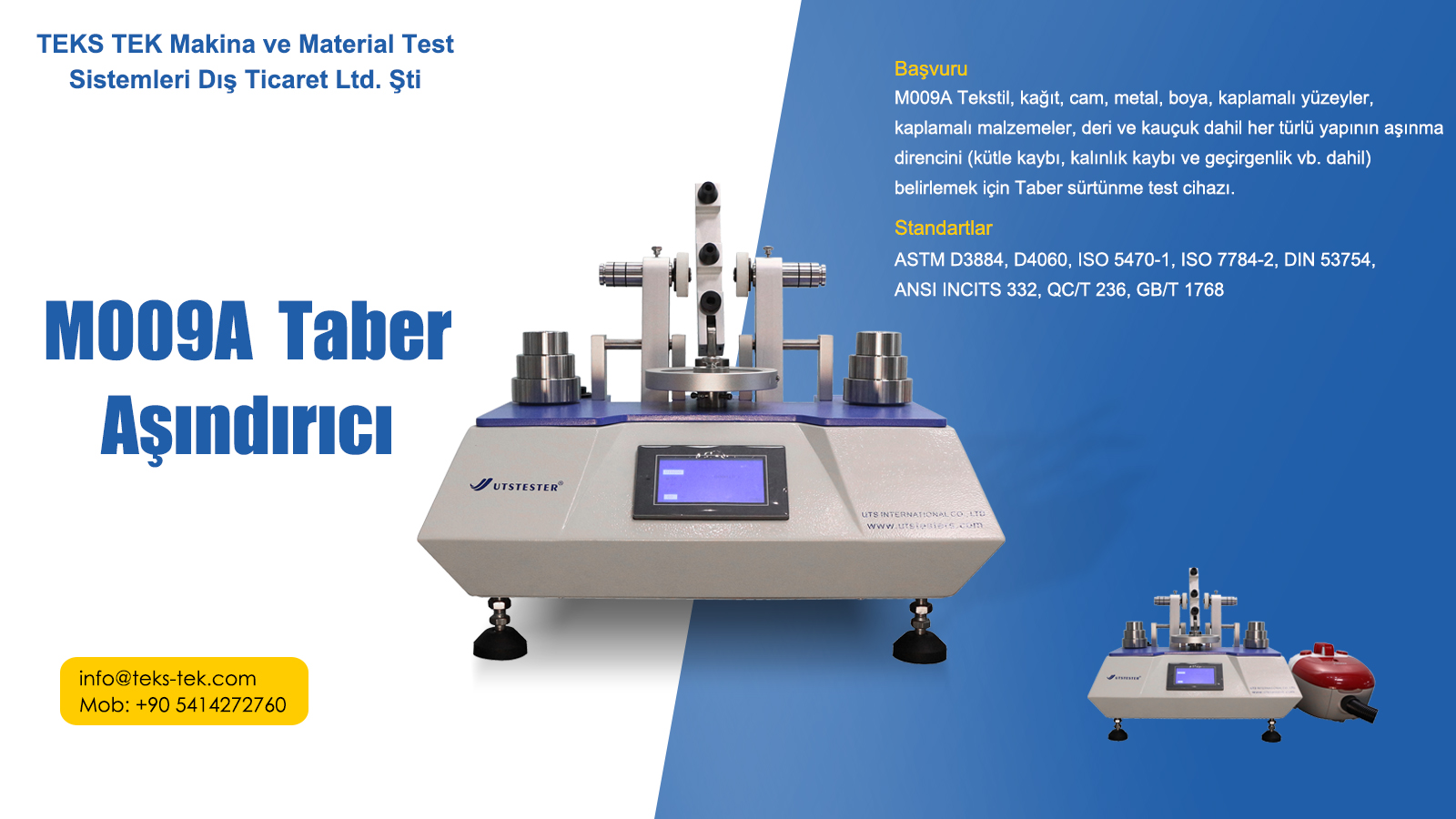Табер Абразер
это инструмент
Широко используется для испытания износостойкости поверхностей материалов. Он оценивает долговечность материалов, имитируя трение и износ в реальных условиях эксплуатации. Основные области применения:
1. Лакокрасочная промышленность
Цель испытания: оценка износостойкости покрытий, таких как краска, лак и гальванопокрытие.
Области применения: автомобильные покрытия, обработка поверхностей мебели, промышленные антикоррозионные покрытия и т. д., чтобы гарантировать, что продукт не будет подвержен износу или отслоению при длительном использовании.
2. Изделия из пластика и резины
Цель испытания: определить стойкость к царапанию и износостойкость таких материалов, как пластиковые пленки и резиновые детали.
Области применения: упаковочные материалы, шины, уплотнители и т. д., для оптимизации рецептур материалов с целью увеличения срока службы.
3. Текстиль и кожа
Цель испытания: проверить износостойкость тканей и кожи, а также смоделировать потери на трение при ежедневном использовании.
Области применения: одежда, обувь, мебельные ткани и т. д., для обеспечения долговечности изделий.
4. Бумажная и полиграфическая промышленность
Цель теста: Оценка износостойкости печатных материалов (таких как этикетки, оберточная бумага) с целью предотвращения осыпания чернил.
Области применения: упаковка продукции, обложки книг и т. д., для обеспечения долговечного качества печати.
5. Электронное оборудование
Цель испытания: Проверка устойчивости к царапинам поверхности электронных компонентов, таких как экраны и клавиатуры мобильных телефонов.
Сценарии применения: Контроль качества потребительской электронной продукции и улучшение пользовательского опыта.
6. Строительные материалы и напольные покрытия
Цель испытания: Оценка износостойкости таких материалов, как плитка, деревянные полы, ковры и т. д.
Сценарии применения: Выбор материалов в строительной отрасли для обеспечения их пригодности для использования в местах с высокой проходимостью.
7. Автомобильная промышленность
Цель испытания: проверка износостойкости материалов салона (например, приборных панелей и обивки сидений).
Сферы применения: повышение долговечности и эстетичности транспортного средства.
8. Исследования и разработки
Цель испытания: предоставление данных по износостойкости для исследований и разработок новых материалов.
Сценарии применения: колледжи и университеты, лаборатории и корпоративные отделы НИОКР для оптимизации характеристик материалов.
Принцип теста
The
Тестер трения Табера
Образец вращается до соприкосновения с фрикционным колесом (например, резиновым или шлифовальным) и прикладывает определённую нагрузку. После определённого количества циклов трения износостойкость количественно оценивается путём наблюдения за степенью износа поверхности образца (например, потерей массы, изменением блеска или глубиной царапины).
Преимущества
Стандартизация: Соответствует международным стандартам, таким как ASTM D4060 и ISO 9352.
Повторяемость: обеспечивает единообразие условий испытаний для легкого сравнения результатов.
Универсальность: может быть адаптирована к различным фрикционным колесам и нагрузкам для моделирования различных сценариев износа.
Примечания
(1) Выберите соответствующее фрикционное колесо и параметры испытания в соответствии с типом материала.
(2) Перед тестированием прибор необходимо откалибровать, чтобы обеспечить точность данных.
Применение фрикционного тестера Табера помогает различным отраслям промышленности заранее прогнозировать износостойкость материалов на этапах проектирования и контроля качества продукции, тем самым снижая частоту отказов при фактическом использовании и повышая надежность продукции.

Электронная почта:
hello@utstesters.com
Прямой звонок: + 86 152 6060 5085
Тел.: +86-596-7686689
Веб:
www.utstesters.com
 +86 152 6060 5085
+86 152 6060 5085





 English
English русский
русский español
español português
português










 hello@utstesters.com
hello@utstesters.com hello@utstesters.com
hello@utstesters.com +86 152 6060 5085
+86 152 6060 5085 +8615260605085
+8615260605085